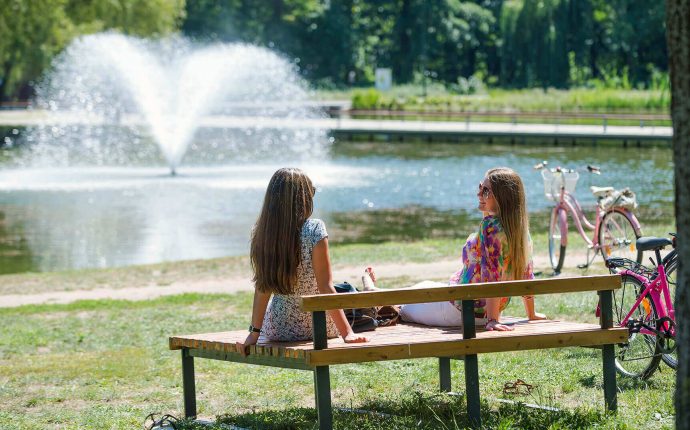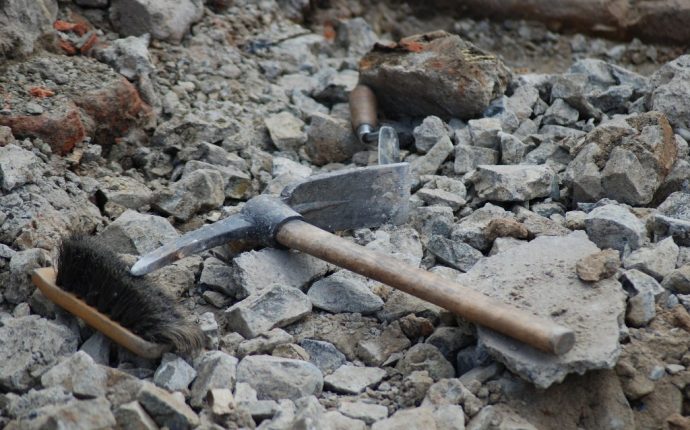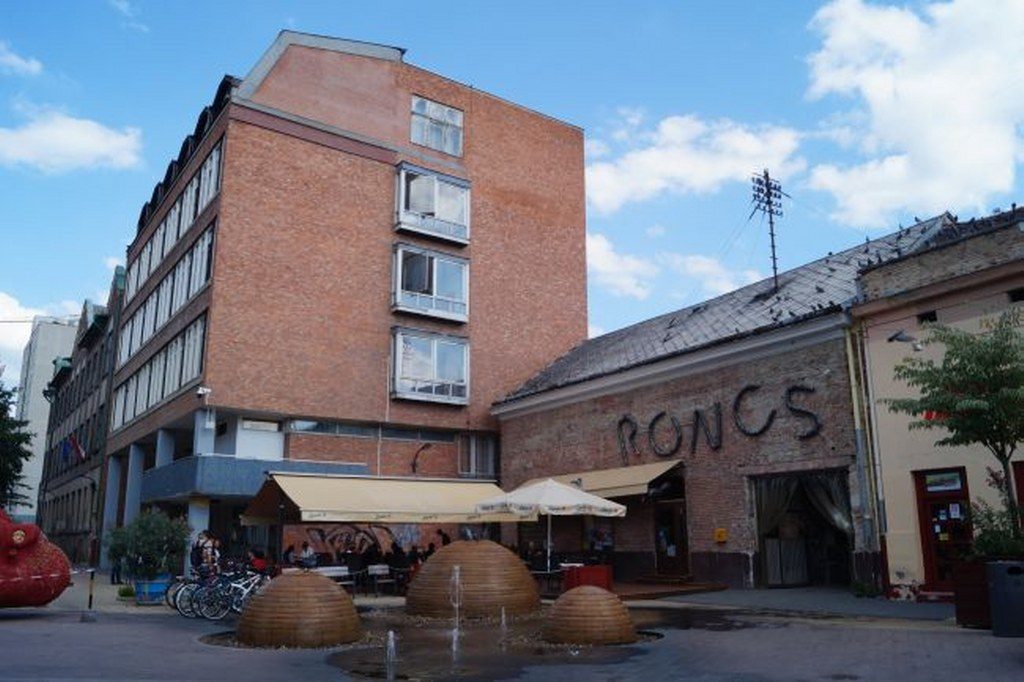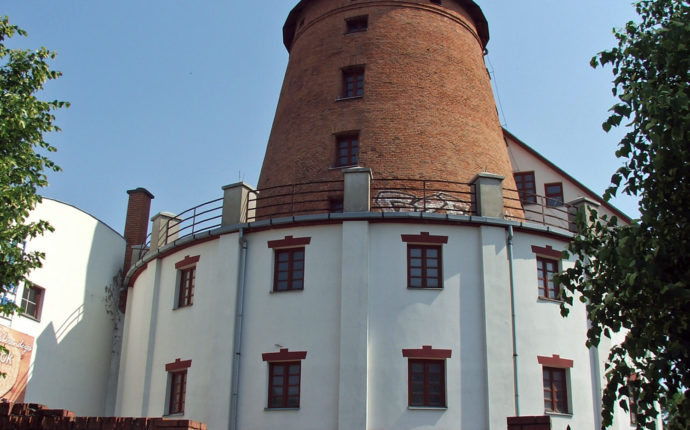Great Forest, Lake Békás + Playground Re-open
Over the weekend, the entire forest including the Lake Békás, and even the largest playground in the city known as “Ötholdas Pagony” were re-opened.
Are you looking for something to do today? Well here’s what’s hot right now. Only the best things to see and do while in Debrecen over the next week and beyond, upcoming events that will stir your emotion, you will never want to leave after your Debrecen Experience.

Over the weekend, the entire forest including the Lake Békás, and even the largest playground in the city known as “Ötholdas Pagony” were re-opened.
Over the weekend, the entire forest including the Lake Békás, and even the largest playground in the city known as “Ötholdas Pagony” were re-opened.
Caution is still prescribed, including the use of social distancing, hand washing, and face masks in enclosed spaces. Even so, it’s great to see things returning to some semblance of normality.
The Great Forest is not only the “breathing heart of Debrecen” but the nation’s first conservation area and the part of the Natura 2000 network. Only a ten-minute ride from downtown, the park always offers peace and quiet in the shade of hundred-year-old trees as well as providing countless entertainment options.
(more…)
Victory day on May 9th marks the end of the Second World war in Europe and the German surrender late on the evening of May 8th, 1945.
Victory day on May 9th marks the end of the Second World war in Europe and the German surrender late on the evening of May 8th, 1945.
The war came to Debrecen between 6th October and 29th October in what is known as the Battle of Debrecen. It was in actual fact a period of ongoing clashes between the two sides.
Debrecen became a strategic objective in the final months of 1944 after German’s prior allies Romania and Bulgaria switched sides, declaring war on Germany and its Hungarian allies. This change of sides was re-enforced by the subsequent drive of soviet general Fedor Tolbukhin’s 3rd Ukrainian Front into Romania and by forces under Malinovsky in the 2nd Ukrainian front into Bulgaria during 10th-12th September 1944.
(more…)
In mid-February 1952, MAFILM began filming a feature film about Erkel’s life and his visit to Debrecen. The recordings made during the filming can be viewed on the website of the Déri Museum.
In mid-February 1952, MAFILM began filming a feature film about Erkel’s life and his visit to Debrecen. The recordings made during the filming can be viewed on the website of the Déri Museum.
Between 18 and 21 September 1868, the 4th National Song Festival was held in Debrecen Debrecen became the center of the music world and attracted many singers and conductors for a few days.
(more…)
In such unusual times, Debrecen has prepared an unusual spring exhibition called “BELSŐ CSEND” (Inner Silence). The virtual exhibition represents local contemporary art. So as you might expect, we can primarily expect works reflecting the sign of the times.
In such unusual times, Debrecen has prepared an unusual spring exhibition called “BELSŐ CSEND” (Inner Silence). The virtual exhibition represents local contemporary art. So as you might expect, we can primarily expect works reflecting the sign of the times.
Some of the works are new and have not yet been featured anywhere else in national exhibitions or previous spring exhibitions.
During the virtual exhibition, 2 May – 2 June, 2020, visitors can vote for works that they would still like to see.
(more…)
In Hungary, a palace might not be what you might imagine. At the beginning of the 20th century, buildings that were large and two-story houses were referred to as “palaces”, and so it is probably for this reason why the building was named as a “palace”. The reality is that Bishop’s palace is was actually a high-end apartment building.
On one corner of Kossuth Square, the street Hatvan Utca (translates to 60 street) begins. The street was unimaginatively named after the fact that the road provided access to 60 new plots, – thirty plots were measured on each side of the road for building new houses in the 15th century. Today, still located at the beginning of the road, on the No.1 plot is situated the church tenement house known as Bishop’s Palace.
In Hungary, a palace might not be what you might imagine. At the beginning of the 20th century, buildings that were large and two-story houses were referred to as “palaces”, and so it is probably for this reason why the building was named as a “palace”. The reality is that Bishop’s palace is was actually a high-end apartment building.
(more…)
On May 1th 1960 the Nagyerdei Cultural Park opened its doors to the public. Built under socialism times, the then-named Lúdas Matyi Amusement Park was later merged with the Zoo.
On May 1th 1960 the Nagyerdei Cultural Park opened its doors to the public. Built under socialism times, the then-named Lúdas Matyi Amusement Park was later merged with the Zoo.
Since its foundation, the Cultural Park has been characterized by constant renewal. Over the past sixty years, generations of visitors have grown up gaining eternal experiences, and the park has grown into one of the region’s leading tourist, leisure, and entertainment destinations.
The amusement park has been closed since March 17 due to the pandemic but on May 1st, it will celebrate its Diamond Jubilee just before the reopening. Thanks to epidemiological mitigation provisions, the Zoo will receive visitors thereafter from May 4, while the official jubilee season at the Amusement Park will begin on May 9, subject to additional institutional public health measures.
(more…)
While the Campus Festival 2020 is cancelled. A replanning committee has been working on overtime to provide an alternative large scale event series to be held towards the end of the summer.
While the Campus Festival 2020 is cancelled. A replanning committee has been working on overtime to provide an alternative large scale event series to be held towards the end of the summer.
The events will be held over 11 featured nights with popular artists. It will include local cooking and specialties and local bands as well.
Those of you who have purchased tickets for Campus Festival will be able to decide between using the tickets for these new events or getting a refund.
(more…)
In Debrecen’s history three gardens really stand out as important. The College Herb garden, the memorial garden and last but not least, the “cemetery garden”.
Debrecen has a tradition of science education and botany. The legacy of botany began with the work of Sámuel Diószegi and Mihály Fazekas, the co-authors of the famous ”Hungarian Herb Book” (1807), and the work carried out in the first Herb Garden (Füvészkert).
The garden was completed in 1840 on the site of today’s Déri Museum and was under the supervision of the Reformed College and served for the purpose of science education. In the meantime, the university was established in the College and then its location moved to Great Forest when its impressive building was completed. With this move, the herb garden of the College lost its purpose and the site was repurposed when the Déri Museum was built.
(more…)
The archaeologists and technicians from the Déri Museum have unearthed the remains of an Iron Age – 3rd century BC – Celtic settlement in the area behind the Ice Hall (Jégcsarnok).
The archaeologists and technicians from the Déri Museum have unearthed the remains of an Iron Age – 3rd century BC – Celtic settlement in the area behind the Ice Hall (Jégcsarnok).
During the excavation, seven Celtic houses have been found thus far, which came as a bit of a surprise because archaeologists were not aware of the existence of any Celtic settlement around Debrecen.
(more…)
Roncsbár, Debrecen’s favorite club, opened its doors eight years ago this year. From its non-descript outward appearance, you might be forgiven in thinking that the venue was just another cafe, with no sign of its glorious reputation or its loyal following.
Roncsbár, Debrecen’s favorite club, opened its doors eight years ago this year. From its non-descript outward appearance, you might be forgiven in thinking that the venue was just another cafe, with no sign of its glorious reputation or its loyal following. A recent interview with Napló magazine gives us an insight into the history and future of the unique bar.

Csaba Bernáth (co-founder): The ruin pub culture started in England about 10 years ago and reached Hungary as well. After Budapest, we wanted to be the first to open such a place. I already had a friendly relationship with Tomi (Tamás Fejes, the drummer of the band “Tankcsapda” and co-founder of Roncsbár). We came to the decision that if we could find a suitable room, we would do it here in Debrecen. It took us half a year to open because of the renovations. Of course, we also needed a very good team, who have been with us ever since. On 13 April 2012, we started with a Magna Cum Laude concert. Tickets were sold out in advance and the pub was full and there has been no stopping ever since!
Eight years have passed since then, but we are still new, fresh, maybe that’s why we have been able to stay successful.
Csaba Bernáth: We both believe that diversity is the key to everything. The decoration, the ideas all come on an ad hoc basis. There was a school in Szabolcs county that was closed down and we bought forty chairs from them right away.
This place can handle everything. Even today, many people come in from the street with the intention of wanting to contribute to the equipment and bring in some interesting, exciting accessories. I could also mention the iconic 491 tram, from which we also got a cut piece. It took us nine o’clock to roll from the entrance to the other side of the nightclub, but it was definitely worth it. The plane on the ceiling, the motorcycle, or perhaps the audience’s favorite tombstone of TV Maci (Hungarian iconic fairytale character) are also worth mentioning. These are all the brainchildren of contributing, creative minds.
Tamás Fejes: We cook from what we have. My wife was involved in the first decoration, but now it’s mostly done by store managers. There is nothing concrete, that is the point. What life brings is what we work with. The point is to be capable of getting renewed constantly.
Many people open a place, and once it is working they don’t make any changes. This is a mistake. That’s why their business fails. We keep inventing new things with the team, week after week, experimenting. Obviously, everything has a shelf life, so we have to move on with the changes, but one thing is for sure: in Debrecen, we are “the ruin pub”.
Tamás Fejes: I traveled the world with the band “Tankcsapda” and I had the good fortune to observe the underground subculture and the various forms of entertainment abroad.
In Debrecen, in many cases, I felt that prudence guided the operators.
People could not have fun in a quiet place, if liberated, in a safe, environment, almost everything could fit. We, on the other hand, were confronted with trends: if someone came to us, they weren’t anxious to have to pose, they could come to talk to friends or rampage at a concert as if they were just having fun in their garden. In addition, from the very beginning, we have placed great emphasis on making ours not only a pub but also a club with live music. We have installed professional sound technology, which attracts a lot of performers and music lovers. We have also received requests to open a “Roncsbár” in other cities of the country, on a franchise basis.
“This place has a soul, the time spent here provides people with the feeling of life, and for us, it is the most important thing.”
In terms of events, our initiatives called “Tivornya” and “Outdoor Disco” attract almost all age groups. Acoustic concerts and retro performances are also available. It is also a good example of the color and variety that characterizes us. Everyone, regardless of genre, has already performed with us from a metal band to light music ensembles.
Tamás Fejes: The biggest success for me was when the bass guitarist of Guns N ’Roses performed with Walking Papers in 2014. It is a real moral triumph to have Duff McKagan performing in a ruin pub and in such a small city. You can encourage everyone to achieve the greatest things with the right organization and attention. However, I could mention many more successful events.
Csaba Bernáth: For me, the biggest success is not really a concrete concert. Rather, even in the current situation, we are receiving many messages asking when we will be open and when we will have events again. We managed to create a regular customer base, which I am very happy about. Tourist groups come on a monthly basis. A French TV channel has made shots here, and we have already appeared in diverse magazines and on CNN Travel. Countless wedding photos and even clip shots have already taken place here. If I count, there were only 710 concerts in the eight years.
Tamás Fejes: If we got a permit, we could double the capacity of the place, because the demand for it is high. Fortunately, Roncsbár has not only a past but also a present and a future. Of course, we would certainly not take it elsewhere, it works well locally here. Many people don’t like it, but I think that being successful in Hungary’s second-largest city for eight years cannot be a coincidence. We put a lot of time and energy into staying functional, and anyone has the change to do the same. Anyone who just “follows” the changes, will always remain a loser.
A city needs to have colorful, fun nightlife places where people can feel safe.
If a larger band plays here as well, – if people get the high quality here as well that they can see in other countries they will not move away. We not only want to attract but to keep our guests here.
Csaba Bernáth: We have an airport with many destinations, we have a developing economy and we have a university with foreign students. This diverse, lively environment requires colorful hospitality. From safety technology to service personnel, we strive for the best possible quality, and we introduce environmentally conscious innovations for a green future. In a word, we’re getting ready to continue and stay with the usual, exciting Roncsbár.

It is astonishing that some places have completely disappeared, such as the Royal Hotel and the Margaret Bath, and others have undergone massive changes, such as the Dósa (formerly Dégenfeld) square and Hal köz.
It is astonishing that some places have completely disappeared, such as the Royal Hotel and the Margaret Bath, and others have undergone massive changes, such as the Dósa (formerly Dégenfeld) square and Hal köz.
Today’s Petőfi Square was called the Népkert (People’s Garden) around 100 years ago. The Royal Hotel shone on the old Deák Ferenc Street, on the northern edge of today’s Petőfi Square from 1907 to the airstrikes in 1944. This lavish building had electric lighting, bath, and central steam heating. Its foundations still lie in the ground and were seen in the lastest landscaping.
(more…)
The widespread use of windmills in Hungary dates back to the second half of the 19th century. According to statistics, there were already 476 windmills in the country by 1863. At the same time, the number of steam mills was increasing in popularity.
The widespread use of windmills in Hungary dates back to the second half of the 19th century. According to statistics, there were 476 windmills in the country by 1863. At the same time, the number of steam mills was increasing in popularity.
Steam mills were far more productive because they were not reliant upon the wind, however, they were more expensive to run and so, the number of windmills first increased then started to decrease. In 1880, there were still more windmills than steam mills due to the lack of economic progress.
Most of the windmills were set up in the Great Plain including towns as Szeged, Kiskunfélegyháza, Debrecen, and Hódmezővásárhely.
(more…)
Stuck at home with nothing to do at home during the Coronavirus lockdown? Why not choose a movie to watch, but not just any movie, choose one with a purpose besides just entertainment. Choose a Hungarian film, for a better understanding of the Hungarian psyche, – there are many movies to choose from, – subtitled
Stuck at home with nothing to do at home during the Coronavirus lockdown? Why not choose a movie to watch, but not just any movie, choose one with a purpose besides just entertainment. Choose a Hungarian film, for a better understanding of the Hungarian psyche, – there are many movies to choose from, – subtitled in English.
Hungarian filmmakers have a long and illustrious history internationally, with many an influential director originating here to become famous internationally. In fact, Americans with Hungarian roots were in large part behind the creation of Hollywood. Consider both Adolph Zukor (founder of Paramount Pictures) and William Fox (founder of Fox – now 20th Centuries Fox) had Hungarian roots.
(more…)
In what is a long-time tradition, the St. George’s Day Herd-out festival and crafts fair has been canceled this year as a result of the Coronavirus Pandemic.
In what is a long-time tradition, the St. George’s Day Herd-out festival and crafts fair has been canceled this year as a result of the Coronavirus Pandemic.
The importance of this annual event for raising awareness of Hortobágy as a UNESCO World Heritage Site cannot be understated because of its cultural significance. At this time of year, the work of animal husbandry comes to the fore, as cattle are moved from their winter dwellings into the open grasslands and pastures. It is a time when shepherds and farmhands are hired and for the counting of sheep.
The event’s importance is because how the work is done today, is how it was done long ago, Hortobágy is a window into a way of life. The tradition is protected, maintained for future generations to witness, and to garner an understanding of what came before. The nearby city of Debrecen was built upon the herdsman way of life, a waypoint along trading routes that grew from being a settlement into a city, a trading post which prospered. However, the way of life started long before the establishment of Hortobágy the place, which was established to supply Debrecen with cattle. The way of life came first, it brought the trading, which led to the establishment of the settlement which later became.
(more…)